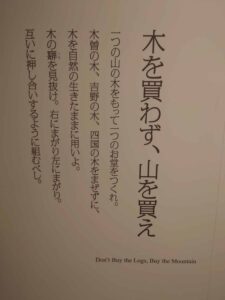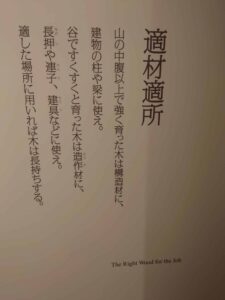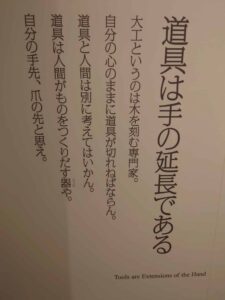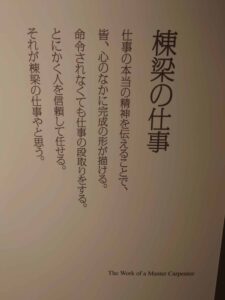Douryou: The Master Temple Carpenters of Japan
Douryou: The Master Temple Carpenters of Japan

Martin Gottschlich
The "Four Wisdoms of Douryou" (or "Tōryō no Yottoku") - core values and principles that represent traditional Japanese carpentry
In the intricate world of traditional Japanese carpentry, the Douryou (sometimes spelled “Dou-ryou” or “Tōryō”) stand out as master craftsmen specifically skilled in temple construction. Their expertise isn’t just in putting together the architectural wonders that are Japanese temples but also in their deep understanding of the cultural, religious, and philosophical significances embedded within these structures.
The “Four Wisdoms of Douryou” (or “Tōryō no Yottoku”) represent core values and principles that guide the work of Douryou, the master temple carpenters of Japan. These wisdoms emphasize both the technical and philosophical aspects of their craftsmanship.
Together, these Four Wisdoms ensure that the temples built by the Douryou are not just architectural marvels but also spiritual havens, harmoniously integrated with nature and deeply rooted in the cultural and religious fabric of Japan.
The "Four Wisdoms of Douryou"
The Takenaka Carpentry Tools Museum, based in the city of Kobe in Western Japan, shows a variety in techniques and tools which comprise the excellence of Japanese traditional carpentry. The museum also exhibits the four wisdoms of the most famous master carpenter.
木を買わず、山を買え
一つの山の木をもって一つの堂をつくれ。
木曽の木、吉野の木、四国の木をませずに、
木を自然の生きたままに用いよ。
木の癖を見抜け。右にまがり左にまがり。
互いに押し合いするように組むべし。
Don’t buy a tree, buy a mountain
Build a temple out of trees of one mountain.
Don’t mix trees from Kiso, Yoshino, or Shikoku,
Use trees as they are in their natural state.
Be aware of the wood’s habits, it can turn to the right and to the left.
It should be paired so that it pushes against each other
適材適所
山の中腹以上で強く育った木は構造材に、
建物の柱や梁に使え。
谷ですくすくと育った木は造作材、
長押や連子、建具などに使え。
適した場所に用いれば期は長持ちする。
The right wood for the job
Trees that grow strong above the mountainside are used for structural timber,
Use them for pillars and beams of buildings.
Trees grown in the valley are used for building materials,
long posts, lattice joists, and fittings.
If used in the right place, they will last for a long time.
道具は手の延長である
大工というのは木を刻む専門家。
自分の心のままに道具が切れねばならん。
道具と人間は別に考えてはいかん。
道具は人間がものをつくりだす器や。
自分の手先、爪の先と思え。
Tools are extensions of the hand
A carpenter is an expert in carving wood.
He must be able to cut with tools according to his heart.
Tools and people should not be considered separately.
Tools are vessels through which human beings create things.
Think of them as the tips of your fingers and toes.
棟梁の仕事
仕事の本当の精神を伝えることで、
皆、心の中に完成の形が描ける。
命令されなくても仕事の段取りをする。
とにかく人を信頼して任せる。
それが棟梁の仕事やと思う。
The Work of a Master Carpenter
By communicating the true spirit of the work,
Everyone can picture the form of completion in their mind.
Make arrangements for work without being ordered to do so.
Trust people and leave the work to them.
I believe that this is the work of a master carpenter.





What can be learnt from a Douryou from a western perspective?
From a Western perspective, the principles and practices of the Douryou offer invaluable insights that transcend mere construction techniques. Here’s what can be learned from these master temple carpenters:
Harmony with Nature: The Douryou prioritize building in sync with the natural environment. From choosing materials to understanding the lay of the land, there’s a profound respect for nature.
Craftsmanship Over Speed: In an era where rapid construction and mass production often take precedence, the meticulous craftsmanship of the Douryou is a reminder of the value of patience, precision, and dedication to one’s art.
Meaning in Design: For Douryou, every element in their construction holds significance. This emphasis on imbuing structures with deeper meanings can inspire to design buildings that resonate with cultural, historical, or societal values.
Continuous Learning and Mastery: The journey to becoming a Douryou is one of continuous learning. This commitment to lifelong education and the pursuit of mastery is a lesson in dedication and passion for one’s craft.
Sustainability: The techniques used by Douryou, from the sourcing of materials to their nail-less construction methods, prioritize durability and longevity. This approach is a lesson in building structures that stand the test of time.
Preservation of Tradition: While embracing modernity, Douryou also preserve and honor ancient techniques and traditions. This balance between the old and the new can teach the value of retaining cultural heritage while innovating.
Incorporating these lessons from the Douryou can enrich Western architectural and construction practices, adding depth, sustainability, and a renewed appreciation for the art and soul of building.

 EU (English)
EU (English) DE (Deutsch)
DE (Deutsch) FR (Français)
FR (Français) UK (English)
UK (English) US Website
US Website


